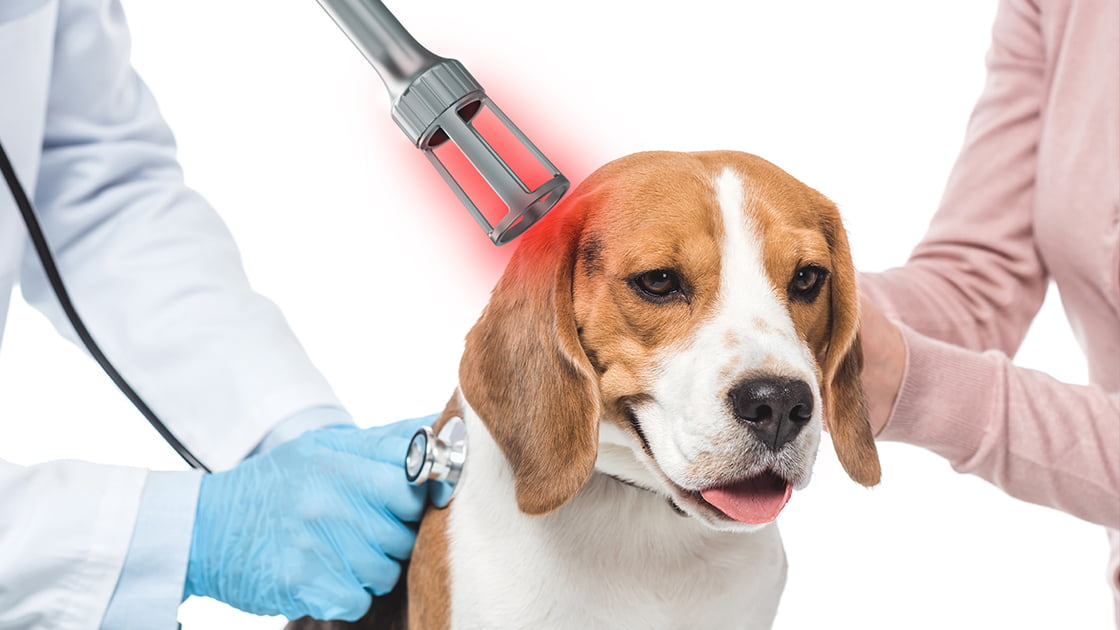Page Contents
As a responsible pet owner, ensuring your furry friend’s well-being is of utmost importance. When your dog is experiencing any discomfort, alleviating their pain takes top priority. Laser therapy is an effective approach for reducing inflammation, pain, and promoting healing in dogs. This treatment is commonly referred to as red-light therapy, photobiomodulation therapy (PBMT), or class iv laser therapy.
If you’re wondering how and when class iv laser therapy can help your canine companion recover, read on.
“Class 4 Laser therapy has demonstrated positive outcomes in treating numerous canine health issues, including osteoarthritis, intervertebral disc disease, lick granuloma, and cellulitis,” says Dr. David Garcia, canine veterinarian of the Veterinary Clinic in USA. Wherever there is inflammation or pain, class iv can be applied,” he adds.
Dr. John Miller, owner of Veterinary Center in Canada claims that Class 4 laser therapy for dogs is an effective modality for reducing pain and inflammation while promoting healing in various tissues, such as muscles, tendons, ears, gums, nerves and skin.
A number of veterinarians are now incorporating Class 4 laser therapy into their multimodal approach, so as to address recurring or chronic ear infections in dogs.
What Conditions Does Class 4 Laser therapy Treat for Dogs?
Arthritis and Joint Pain
Ear Infections
Dental Procedures
Skin Conditions
Rehabilitation from Injuries
How Does Class 4 Laser Therapy for Dogs Work?
Class IV lasers operate by emitting high-energy beams that contain specific wavelengths capable of saturating the tissue, which triggers a direct photochemical response. This process is known as ‘photobiomodulation’. Laser energy boosts circulation in the affected region, attracting oxygen and nutrients to the damaged area. It enhances oxygen release into the tissues and ATP production, which aids cellular metabolism. This leads to an ideal healing environment that not only minimizes inflammation and pain but also accelerates the healing process.
How are Class 4 Laser Treatments Administered?
Laser treatments are usually administered by a trained healthcare professional or a veterinarian. The specific method of administration depends on the type of treatment being provided and the area of the body being targeted.
In general, laser treatments are non-invasive and painless. The dogs may experience a warming sensation or mild tingling during the treatment, but most animals tolerate it well and appear relaxed during the session.
During the treatment, a laser therapy device that emits the laser is placed over the affected area. The length of the laser treatment can vary depending on the condition being treated and the size of the affected area. The wavelength and power level of the laser can also be adjusted based on the depth of the targeted tissue.
How Many Laser Therapy Treatments Will Your Dog Need?
The number of laser therapy treatments required for a dog varies depending on the condition being treated, the severity of the issue, and the individual animal’s response to the treatment. In general, acute conditions such as wounds or post-operative care may require one or two sessions to achieve significant improvement. Chronic conditions such as arthritis or hip dysplasia may require multiple sessions over several weeks to see noticeable results.
Most veterinarians will recommend an initial series of six to eight laser therapy treatments, spaced out over a few weeks, to ensure optimal results. After the initial series of treatments, the veterinarian may suggest maintenance sessions scheduled at regular intervals to maintain the positive effects of the therapy.
Is Class 4 Laser Therapy Safe for Dogs?
Laser therapy is generally considered safe for dogs when administered by a trained healthcare professional or veterinarian. The treatment is non-invasive and does not require sedation or anesthesia in most cases.
However, there are some precautions that should be taken:
Eye protection: Appropriate eye protection should be worn by both the dog and the person administering the treatment to protect against exposure to the laser beam.
Direct exposure: Laser therapy should never be applied directly to the eyes or any malignant tumors.
Pregnancy: Pregnant dogs should not receive laser therapy as its effects on fetal development are unknown.
Photosensitivity: Some breeds of dogs such as Australian Shepherds and Shetland Sheepdogs may experience photosensitivity, and laser therapy should be used cautiously in these animals.
Cancer: Laser therapy should be avoided in dogs with known malignancies as it can stimulate tumor growth.
